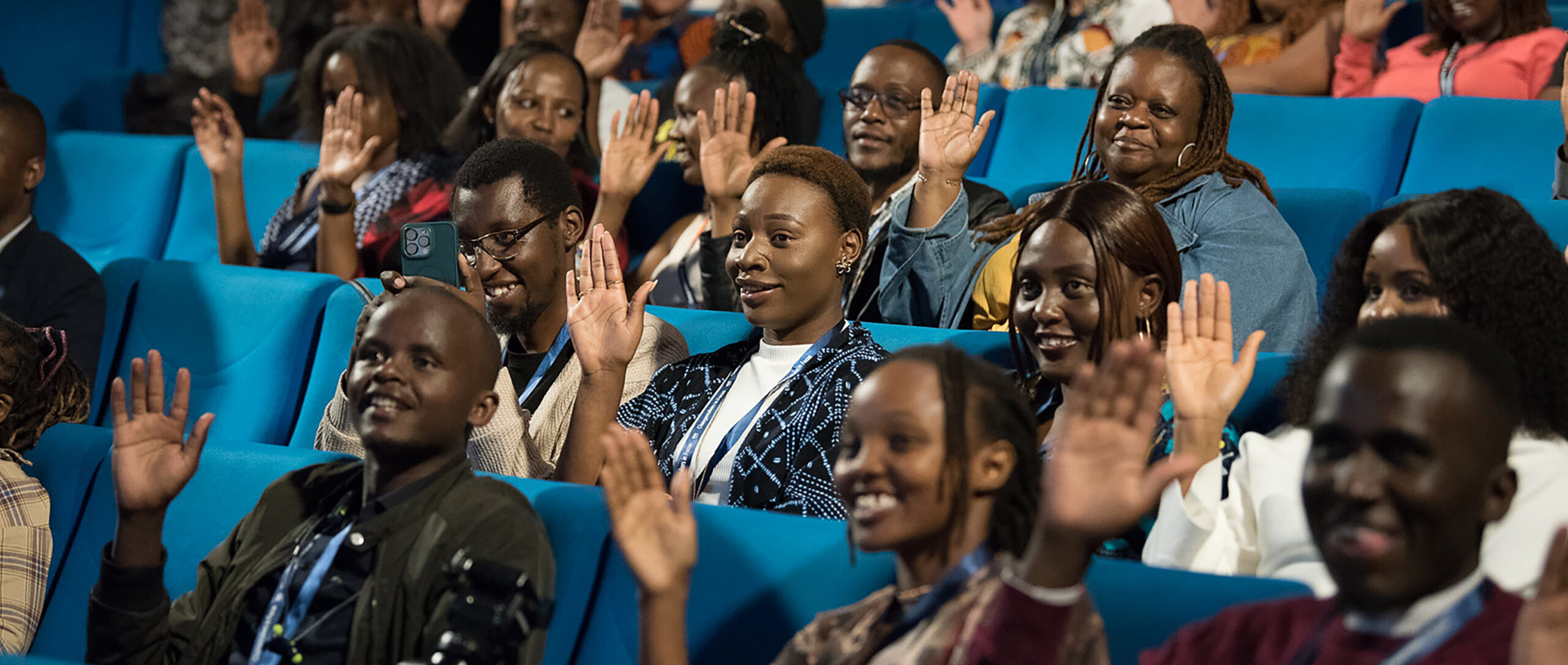Conscious Social Change: Investing in Mindfulness for Fierce Compassion and Social Impact
“Yesterday I was clever, so I wanted to change the world. Today I am wise, so I am changing myself.” –Rumi
Those of us working towards a more just society must embody the same principles we envision for the world. This begins with mindfulness, which in turn drives compassion.
Mindfulness can be defined as paying attention to whatever is happening in the present moment, with curiosity and without judgment. This can be practiced in a number of ways, from sitting intentionally and paying attention to your breath, to bringing awareness to things happening around you.
Research is beginning to demonstrate the positive impact of mindfulness on the individual, including improved immune system functioning, decreased stress and worry, enhanced memory and concentration, increased positive emotions, and reduced conflict and anger.
When mindfulness is applied to social innovation, it transforms the way we diagnose issues and advance change. It allows us to understand ourselves and change from the inside out.
With greater presence, we can listen better, understand people more deeply, and build stronger relationships. With deeper self-awareness, we are more likely to respond wisely instead of reacting blindly, and step back to restore ourselves when we need greater balance.
Employing the curiosity inherent in mindfulness, we find more insight in our challenges, which helps us innovate, improve our effectiveness, and find meaning in our work. The same process of deep inquiry used for self-awareness can then be applied to understand others, diagnose issues, and design solutions that embrace compassion and ultimately lead to longer-term, sustainable transformation.
I call this approach “Conscious Social Change,” a design philosophy and methodology for creative, compassionate solutions-building, grounded in mindfulness and self-awareness. Following are five fundamental principles of Conscious Social Change, and ways that mindfulness is relevant to social change.
Cultivating presence: We begin by simply noticing our own physical, emotional, and mental states, as well as our external environment. The more we improve our self-awareness, the more clearly we are able to see how change affects us personally and where our own anxiety, reactivity, and fear originate.
This form of brain training also improves our ability to recover more quickly from challenges with patience, self-compassion, and clarity about what action to take. Further, the quality of our attention defines the quality of our engagement with the world. Mindfulness supports us in building relationships based on deeper human understanding.
Become whole: Next, we use mindfulness to work on the unexamined parts of ourselves that cause us to react unconsciously in ways that may distort our intentions.
In many circumstances, our deepest discomfort comes from simply wanting things to be different. If we work from a desire to right injustice, this discomfort can serve as a beneficial motivation. But sometimes other desires can infiltrate our positive change work, and we end up grasping for success, publicity, or funding as ends in themselves.
We may also go to great lengths to protect ourselves from difficulty, often at the expense of others. Through self-awareness, we discover our ability to withstand discomfort and act with greater insight. And when we inquire into the underlying reasons for our anxiety and fears, we can more easily find compassion for others.
Ensure balance: Without regular self-care, individuals can experience burnout and disillusionment. The impact of such stress is broad, including not only high turnover rates, but also higher rates of physical illness, poor decision-making, PTSD, depression, compassion fatigue, and higher accident rates.
With mindfulness, change leaders are more able to remain grounded and discern when to take a step back to restore themselves, so as to avoid burnout and instead stay whole, grounded, and completely available to do their work in the world.
Stay attuned: Change-makers too often work from an “us vs. them” paradigm that tries to compel people to change with sticks and carrots, or demonizes the opposition. Further, Western approaches to development often involve incorrect assumptions, imposed solutions, culturally inappropriate methods, and disconnection from recipients of support.
Conscious Social Change uses mindfulness to help us stay attuned to deeper issues via three key steps:
- Understand change from the inside out: We must not look at change within an “us vs. them” paradigm, but instead seek to understand the common drivers of human behavior through our own experience—behavior that often arises from suffering and then reacting blindly to avoid or grasp at change. This enables us to design with compassion for real transformation not short-term compliance.
- Work collectively: Employ deep listening and curiosity to work collectively and inclusively with all stakeholders, including any perceived opponents, to (a) diagnose issues comprehensively, (b) define our common mission, values and vision, (c) refine program offerings, goals, metrics, and methods of assessment, and (d) leverage the unique offerings of all for greater collective ownership.
- Stay responsive: Rather than being activity-driven—pursuing growth by simply scaling existing programs—Conscious Social Change is issue-driven. The approach focuses on alleviating the underlying social issues at the root level without attachment to a particular agenda.
Thus mindfulness employed in solutions design ensures attunement to the shifting nature of deeper issues and results in solutions that are also more likely to be sustainable because of their informed, inclusive and responsive nature.
Lead from within: Mindful leaders look at everything with curiosity—including conflict, “failure,” and challenges—and as a chance to learn. As they lead and learn, they take responsibility for their own roles in collective problems, and work collaboratively towards solutions.
With mindfulness practice over time, social entrepreneurs are less likely to be obstructed by self-limiting paradigms and are more open to new perspectives on how change happens, leading to radical new possibilities.
Finally, the more we employ mindfulness, the more likely we will find our unique purpose, enabling us to manifest change in a way that creates meaning for ourselves and positive impact for others.



